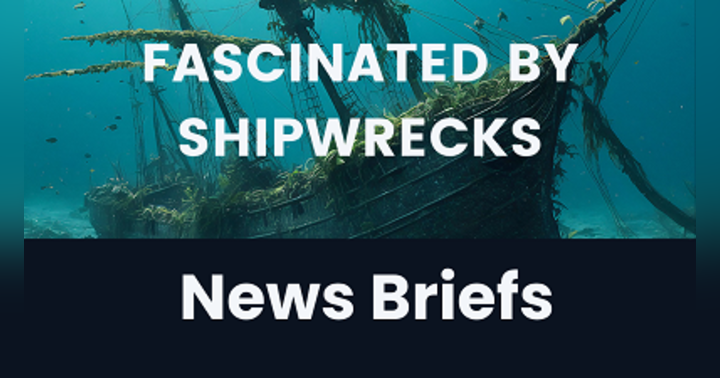Careers Beneath the Waves: A Conversation with Ryan Miranda

Ryan Miranda diving with an underwater metal detector during an ECU field school in partnership with the Defense POW/MIA Accounting Agency in Saipan, Commonwealth of the Northern Mariana Islands. Credit: East Carolina University
Maritime archaeologist Ryan Miranda has followed a winding and adventurous path, from rowing on rivers in Connecticut to diving among wrecks in the crystal-clear waters of Saipan. His journey blends historical curiosity with a love of the outdoors, leading to a career that explores humanity’s deep and complex relationship with the sea.
From Connecticut to Costa Rica: A Passion for Water and History
Ryan's fascination with history started early, inspired by his father and cemented by stories of pirates and explorers. But it wasn’t until college at Washington College in Maryland that he discovered maritime archaeology as a field of study. “I took a course in maritime archaeology and thought, ‘this is really cool,’” he recalls. That course changed the course of his career.
His education continued with a field school through Flinders University in Australia, which gave him his first taste of underwater archaeological work. Afterward, Ryan pursued a master’s degree at East Carolina University (ECU), one of the top training programs for maritime studies. Through ECU, he worked with organizations like the Defense POW/MIA Accounting Agency (DPAA) and helped train young divers in Costa Rica.
Ryan Miranda stepping off a dive boat to dive down to a site off the North Carolina Coast. Credit: East Carolina University
Studying the USS Constitution
One of Ryan’s most meaningful academic projects was his thesis on the USS Constitution, titled Oak, Steel, and Men: The History of USS Constitution Through Artifact Biography. Rather than focusing only on the ship's timeline, he explored the human connection to the vessel by tracing the stories of four artifacts, including a measuring tool, a sword, a rosary, and souvenirs made from the ship’s old timbers.
“The Constitution has been restored many times since 1797,” he explained. “When they remove old wood or copper, they often turn it into pens, coins, even furniture, connecting the public directly with history.” Ryan was given the chance to explore the ship’s lower decks and touch the original timbers, a rare privilege and a powerful moment for any maritime historian.
Ryan Miranda taking pictures of a sword owned by Commodore Edward Preble, A commander of the USS Constitution, in preparation for creating a 3-D photogrammetric model for his thesis research. Credit: Ryan Miranda
Training the Next Generation and Learning from Them
Fieldwork is central to Ryan’s career, but what truly drives him is sharing knowledge and helping others become stewards of maritime heritage. In Costa Rica, he worked with Embajadores del Mar, a local organization that trains teens in diving and archaeological methods. “They’re becoming the guardians of their own heritage,” he said. "It’s important that the people who live there tell their own stories.”
Ryan has also taught courses as an adjunct lecturer, bringing his field experiences full circle.
A Community That Stays Connected
The maritime archaeology community may be small, but it’s tightly knit. “Everyone kind of knows everyone,” Ryan explained. “I constantly run into people who’ve worked with my professors or been on similar projects.” His advice to aspiring maritime archaeologists? Start conversations. “Reach out to professionals in government agencies, universities, or private firms. Everyone in this field loves to talk about what they do.”
He recommends checking out organizations like NOAA’s Office of National Marine Sanctuaries, the Naval History and Heritage Command’s underwater archaeology branch, and the National Park Service’s Submerged Resources Center.
Beyond Diving: Technology Opens New Doors
While diving is a hallmark of the field, Ryan is quick to point out that it's not the only way to get involved. "We're learning how to work with sonar. We're learning how to work with Autonomous Underwater Vehicles (AUVs), Remotely Operated Vehicles (ROVs), drones. There's so much you can do without even having to get wet."
Ryan is particularly excited about innovations in 3D photogrammetry, virtual reality, and augmented reality. “Imagine using a waterproof tablet underwater to see what the shipwreck used to look like,” he said. “Or putting on a VR headset to explore a site without needing a diving certification.” These tools make maritime archaeology more accessible to the public and preserve fragile sites in a digital format.
Staying Curious and Looking Ahead
As Ryan’s career path continues, he remains deeply committed to ongoing learning and growth. “Even with a master’s degree and years of experience, I’m always learning,” he said. “Talking to people, reading, staying up to date with technology, it all helps us see projects in new ways.”
His journey reflects the best of what maritime archaeology has to offer: meaningful connections to history, community, and the sea.
Want more fascinating stories from the deep?
Catch the full interview with Ryan Miranda on the Fascinated by Shipwrecks podcast. Listen or watch anytime.
© 2025 Fascinated by Shipwrecks








